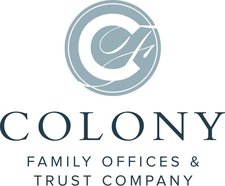The Roth 403(b)
Some employers offer 403(b) plan participants the opportunity to make Roth 403(b) contributions. If you have access to this option, Roth contributions could play an important role in maximizing your retirement income.
What is a Roth 403(b)?
A Roth 403(b) is simply a traditional 403(b) plan that accepts Roth 403(b) contributions. Roth 403(b) contributions are made on an after-tax basis, just like Roth IRA contributions. This means there's no up-front tax benefit, but if certain conditions are met, your Roth 403(b) contributions and all accumulated investment earnings on those contributions are free from federal income tax when distributed from the plan. [401(k) and 457(b) plans can also allow Roth contributions.]
Who can contribute?
Once you're eligible to participate in a 403(b) plan, you can make Roth contributions regardless of your salary level. (This is in contrast to a Roth IRA where your ability to contribute may be limited or eliminated if your income exceeds certain amounts.)
How much can I contribute?
There's an overall cap on your combined pre-tax and Roth 403(b) contributions. In 2024, you can contribute up to $23,000 of your pay ($30,500 if you're age 50 or older) 1 to a 403(b) plan (up from $22,500 and $30,000, respectively, in 2023). You can split your contributions any way you wish. For example, you can make $10,000 of Roth contributions and $13,000 of pre-tax 403(b) contributions. It's up to you.
But keep in mind that if you also contribute to a 401(k), SIMPLE, SAR-SEP, or another 403(b) plan, your total contributions to all of these plans — both pre-tax and Roth — can't exceed $23,000 (plus catch-up contributions) in 2024. It's up to you to make sure you don't exceed these limits if you contribute to plans of more than one employer.
If you also participate in a Section 457(b) plan, any pre-tax contributions you make to the 457(b) plan are in addition to your 403(b) contributions. This means you can contribute up to $23,000 of pay, Roth or pre-tax, to the 403(b) plan and an additional $23,000 pre-tax to the 457(b) plan in 2024 (plus catch-up contributions) — a significant savings opportunity.
Can I also contribute to a Roth IRA?
Yes. Your participation in a Roth 403(b) plan has no impact on your ability to contribute to a Roth IRA. You can contribute to both if you wish (assuming you meet the Roth IRA income limits). You can contribute up to $7,000 to a Roth IRA in 2024, $8,000 if you're age 50 or older (or, if less, 100% of your taxable compensation), up from $6,500 and $7,500, respectively, in 2023. 2
Should I make pre-tax or Roth 403(b) contributions?
When you make pre-tax 403(b) contributions, you don't pay current income taxes on those dollars. But your contributions and investment earnings are fully taxable when you receive a distribution from the plan. In contrast, Roth 403(b) contributions are subject to income taxes up front, but qualified distributions of your contributions and earnings are entirely free from federal income tax.
The decision depends on your personal situation. If you think you'll be in a similar or higher tax bracket when you retire, Roth 403(b) contributions may be more appealing. However, if you think you'll be in a lower tax bracket when you retire, pre-tax 403(b) contributions may be more appropriate. Your investment horizon and projected investment results are also important factors. A financial professional can help you determine which course is best for you.
Are distributions really tax free?
Because your Roth 403(b) contributions are made on an after-tax basis, they're always free from federal income tax when distributed from the plan. But the investment earnings on your Roth contributions are tax free only if you meet the requirements for a "qualified distribution."
In general, a distribution is qualified only if it satisfies both of the following requirements:
- It's made after the end of a five-year waiting period
- The payment is made after you turn 59½, become disabled, or die
The five-year waiting period for qualified distributions starts with the year you make your first Roth contribution to the 403(b) plan. For example, if you make your first Roth contribution to your employer's 403(b) plan in December 2024, then the first year of your five-year waiting period is 2024, and your waiting period ends on December 31, 2028.
But if you change employers and roll over your Roth 403(b) account from your prior employer's plan to your new employer's plan (assuming the new plan accepts Roth rollovers), the five-year waiting period starts instead with the year you made your first contribution to the earlier plan.
If your distribution isn't qualified, the portion of your distribution that represents investment earnings on your Roth contributions will be taxable and subject to a 10% early distribution penalty unless you're 59½ or another exception applies.
You can generally avoid taxation by rolling your distribution over to a Roth IRA or to another employer's Roth 401(k), 403(b), or 457(b) plan, if that plan accepts Roth rollovers. [State income tax treatment of Roth 403(b) contributions may differ from the federal rules.] You may also be able to keep the funds in your former employer's plan, if allowed 3
What about employer contributions?
Your employer can match your Roth contributions, your pre-tax contributions, or both. Prior to 2023, employer contributions were required to be made on a pre-tax basis, even if they matched your Roth contributions. In 2023 and future years, you may be able to have matching contributions invested in your Roth account (on an after-tax basis), provided you are fully vested in those contributions. 4
What else do I need to know?
Like pre-tax 403(b) contributions, your Roth 403(b) contributions and investment earnings can be paid from the plan only after you terminate employment, attain age 59½, become disabled, or die. Certain exceptions apply.
You must begin taking distributions from a Roth 403(b) plan after you reach age 73 (75 for those who reach age 73 after December 31, 2032), or in some cases, after you retire. But this isn't as significant as it might seem, since you can generally roll over your Roth 403(b) dollars (other than RMDs themselves) to a Roth IRA if you don't need or want the lifetime distributions. [Beginning in 2024, distributions will no longer be required from Roth 403(b)s.]
Employers aren't required to make Roth contributions available in their 403(b) plans. So be sure to ask your employer if it is considering adding this exciting feature to your 403(b) plan.
| Roth 403(b) | Roth IRA | |
|---|---|---|
| Maximum contribution (2024) |
Lesser of $23,000 or 100% of compensation |
Lesser of $7,000 or 100% of compensation |
|
Age 50 catch-up
(2024)* |
$7,500 |
$1,000 |
| Who can contribute? |
Any eligible employee |
Only if under income limit |
| Age 73 required distributions? |
No (after 2023) |
No |
| Potential matching contributions? |
Yes |
No |
| Potential loans? |
Yes |
No |
| Tax-free qualified distributions? |
Yes, 5-year waiting period plus either 59½, disability, or death |
Same, plus first-time homebuyer expenses (up to $10,000 lifetime) |
| Investment choices |
Limited to plan options |
Virtually unlimited |
| Federal bankruptcy protection |
Unlimited |
$1,512,350 (All IRAs aggregated) 5 |
*Special Section 403(b) catch-up rules may also apply.



